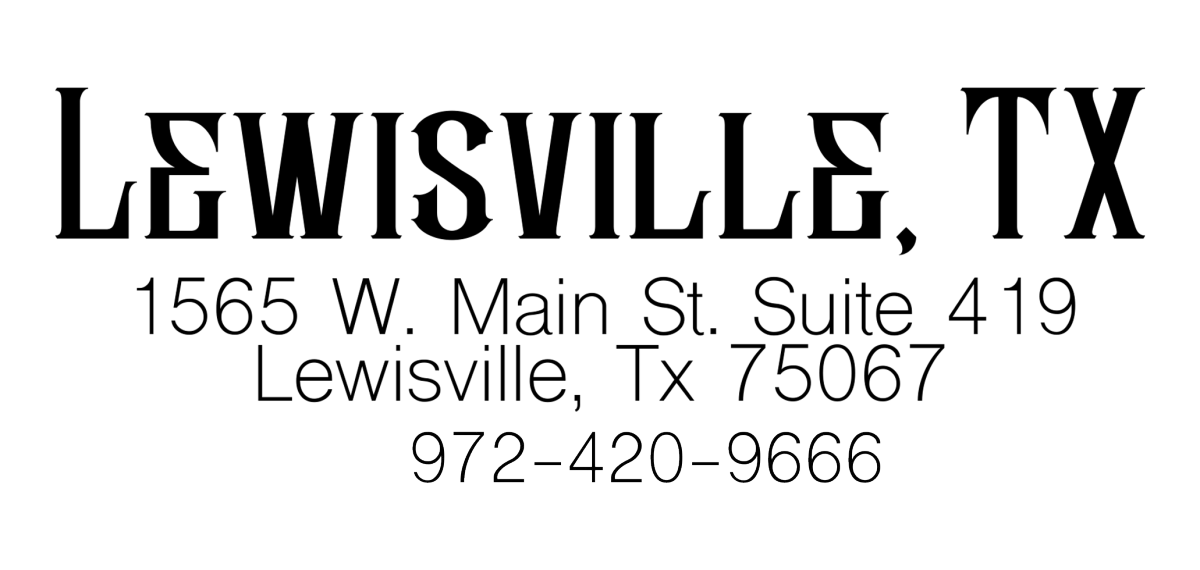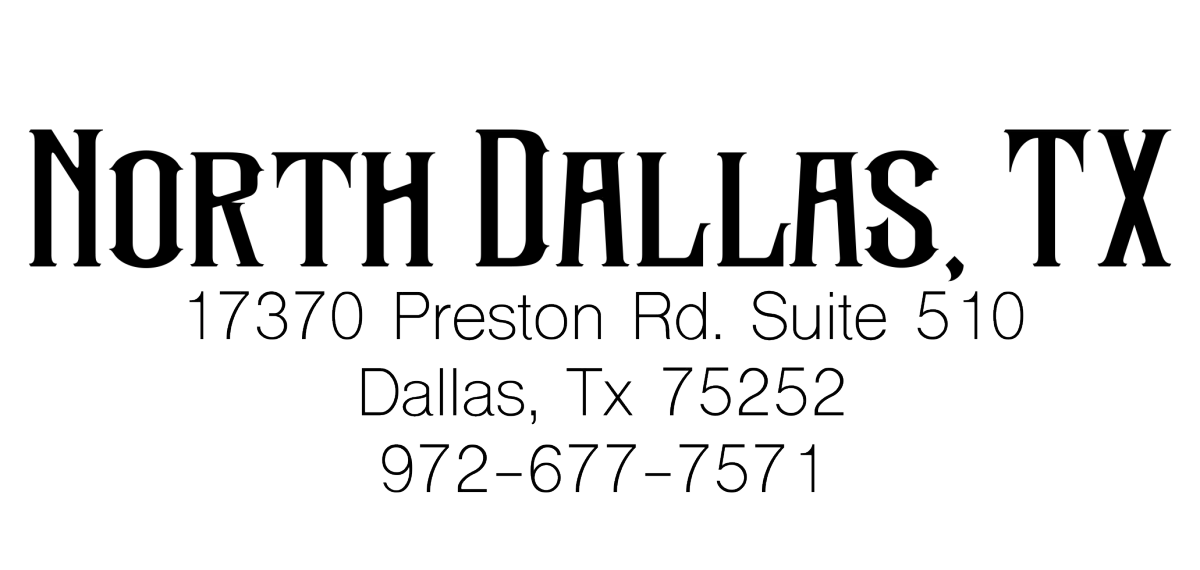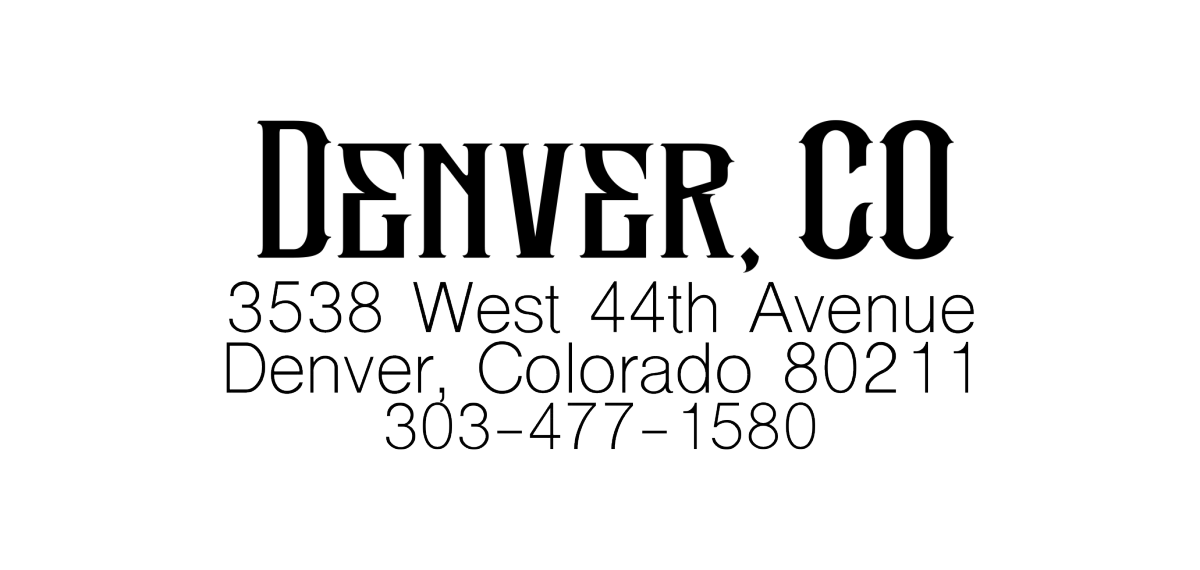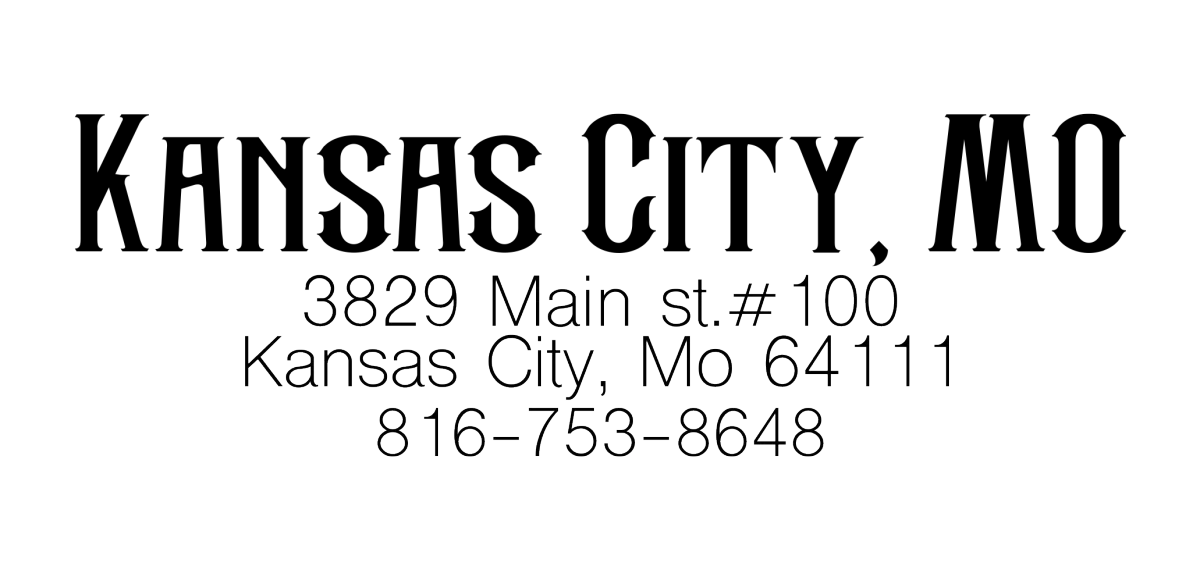Aftercare
Please consider that everyone heals different and each tattoo should be given the appropriate attention to aftercare every time. It should not be assumed that all heals will be the same, even if you have previously been tattooed. The following aftercare is a general guide for two different types of average healing practices. The first will be if your artist is using Saniderm. The second will be a more traditional method. Your artists will give you the appropriate instructions based on your tattoo.
Saniderm Healing Method
Saniderm will normally be applied by your artist in the studio. In some cases, your artist may instruct you to apply it yourself at home. Leave the Saniderm on for 3-7 days. The duration will depend on your specific tattoo session, so please follow your artist’s instructions.
How To Remove Saniderm?
Remove the Saniderm in a warm shower. The warmth will loosen the adhesive and make it easier to remove. Find an edge of the Saniderm and slowly pull it back over itself in the direction of hair growth. Pulling upward on the Saniderm can be painful, so we don’t recommend it. If you’re having trouble removing the Saniderm, use Opti-Scrub Antimicrobial Soap to loosen the bandage.
What is Saniderm?
Designed with tattoos in mind, Saniderm is a vegan polyurethane acrylic adhesive medical bandage. Saniderm tattoo bandages are breathable and flexible, yet durable enough to protect your tattoos from outside irritants. Saniderm also plays an important role in tattoo aftercare by sealing in the fluids that your body secretes during the healing process, further promoting regeneration. The medical community commonly uses products similar to Saniderm for aiding in the healing of cuts, burns and road rash.
Learn more at saniderm.com.
After The Saniderm Is Removed
Clean your tattoo with Opti-Scrub Antimicrobial Soap and warm water. The Opti-Scrub Antimicrobial Soap can be purchased at both of our studios. Do not use bar soap, loofahs, rags or sponges as they harbor bacteria. Lather with soap first, then wash using your palm, gently removing any slimy residue. Rinse with cold water and pat dry with a clean paper towel, then allow it to air-dry for 10 minutes.
Q: What’s the difference between Antimicrobial and Antibacterial?
A: Antimicrobial is an additional line of defense beyond antibacterial. An antimicrobial substance is one that kills or inhibits the growth of microorganisms, fungi or protozoans as well as bacteria.The next stage of after care will depend on if your tattoo has reached the peeling stage or not.
If Your Tattoo Has NOT Started To Peel
Sparingly, but thoroughly, massage a very small amount of Redemption Organic Tattoo Aftercare into the skin to keep the tattoo slightly moist, but not smothered. Do this every four to six hours (washing before each application). Redemption is a USDA certified organic tattoo ointment and is available at both studios. Use just enough to give the tattoo a slightly satin shine, and blot with a clean paper towel. Your skin will take in all it needs, so do not leave excessive ointment on the skin. Ensure that extra moisture doesn’t get trapped under the Redemption by blotting and air-drying after every washing. Do not use petroleum jelly or products containing petroleum (e.g. Vaseline, Aquaphor, etc.).
If Your Tattoo Has Started To Peel
Your tattoo will start to peel, similar to a sunburn. Do not pick or scratch at the cracked and flaking skin.
At this point, do not apply any more ointment. The area will become dry and itchy. Redemption lotion can now be used three to four times daily, for at least two weeks, instead of the ointment. Repeat each day until the skin returns to its normal texture and elasticity.
If you feel a heavier lotion is required to prevent over-drying in-between application (physically dry to the touch and not just skin that feels tight), you may either apply additional Avocado Oil to the driest areas or switch up to a heavier lotion like Lubriderm for Normal to Dry, or Dry Skin.
Q: What if I get scabs?
A: Call us as soon as possible. Scabs are the body’s natural way of protecting wounds while they are healing. However, it is important to maintain the appropriate aftercare to prevent scabs from forming as they can prolong and complicate the healing process, which can lead to uneven healing and even scarring. If scabs do form, once the tattoo is in the full peeling phase, sparingly apply lotion to the entire area making sure to thoroughly massage and not over apply or soak scabs with lotion. Any developed scabs should not be picked at or prematurely removed. If you get any pimples in the area tattooed during this phase, you need to decrease lotion application times or switch down to a lighter lotion.
Q: It looks like I have clear fluid-filled blisters or pimples in the area that was tattooed? What should I do?
A: Call us as soon as possible. You may have heat rash, a skin condition caused by blocked sweat ducts and trapped sweat beneath the skin. Heat rash usually clears on its own but you can help relieve symptoms by cooling your skin and preventing sweating. If your symptoms last longer than a few days, the rash seems to be getting worse, or you notice signs of infection, contact a trained physician.
How Does Saniderm Works?
When you get a tattoo, you are essentially giving yourself a wound. Our bodies naturally produce healing elements to break down dead tissue and rebuild new tissue when it experiences injury — and under normal circumstances, these healing elements will dry up and evaporate quickly. When this happens, it hinders the healing process and can cause scabbing, scarring and discoloration. Saniderm’s tattoo bandage seals in the body’s natural moisture and healing enzymes, allowing the body to regenerate more efficiently. Additionally, airborne bacteria can penetrate through your broken skin after you get tattooed. For this reason, it’s important to cover the tattoo with a bandage or dressing. We advise against using saran wrap, as it can suffocate your tattoo. By design, Saniderm’s tattoo bandage is permeable enough for oxygen and water vapor to pass through. This is important, as it allows the wounded area to maintain optimal levels of breathability. Additionally, Saniderm protects against dirt and germs, while offering protection from friction and other irritants that may further interfere with the healing process.
Could I Have An Allergic Reaction to Saniderm?
Saniderm is both latex free and hypoallergenic, so allergic reactions are very rare. However, some people may have sensitive skin or allergies to adhesives. If you do experience a rash, abnormal skin irritation, or other symptoms of an allergic reaction, discontinue use and wash with mild soap. Similarly, consult a physician if necessary, and never use Saniderm on infected skin!
What You Should NOT Do After A Tattoo Session
The healing tattoo should never be submerged or soaked in water. You should also avoid saunas or other steamy and sweaty environments until the tattoo has finished flaking and peeling. Therefore, limit yourself to only short showers that DO NOT allow steam to build up on bathroom mirrors.
Do not swim until the flaking and peeling are all gone naturally by itself. Usually, this takes around two (2) to three (3) weeks. The Texas health department lists that there should be at least a two (2) week waiting period.
While your tattoo is healing, do not allow it to be exposed to sun or other forms of UVA/UVB radiation including tanning beds. This significantly increases your risk of scaring as the tattooed area is still an open wound. Also be aware that there is an increased risk to skin cancer as the skin is highly vulnerable in any healing condition.
Refrain from any workout or physical activity heavier than walking, especially in cases where the new tattoo is in a direct sweat zone of the body. It is also important that a fresh tattoo be kept out of the sun and dirty environments, as it is still an open wound.
What You Should DO after A Tattoo Session
After all flaking and peeling is gone, normal activities in water can be resumed.
The use of sunblock on the tattooed area may be resumed after all the flaking and peeling is gone. When in the sun or swimming, it is vital to apply and allow to dry, a sunblock of at least 60 SPF every two (2) hours as listed by FDA regulations.
Please be aware that sunblock of 100 SPF and higher is available. Sun burning will permanently damage and fade your healed tattooIntentionally tanning your skin will make tattoos look dingy. If you must tan, use a minimum of 60 SPF on your tattoos even if you choose to use other methods for the rest of your non-tattooed skin.
After all flaking and peeling is gone, light to moderate cardio may be resumed. However, muscle specific training involving the tattooed area may be resumed when the collagen returns to the area. This takes roughly three (3) to four (4) weeks to allow for complete return of elasticity to the skin.
Daily moisturizing and staying hydrated (8 glasses of water a day – 64 fl. oz. or 2 liters) keeps the skin healthy which inevitably keeps the tattoo looking good. The healthier the skin, the better the tattoo will look. Exfoliating and/or shaving/trimming the hair on the tattoo can also keep the tattoo looking better.
Traditional Healing Method
Clean your tattoo. Remove the bandage after three (3) hours, but no more than twelve (12). DO NOT remove the bandage until you can properly clean the tattoo with mild soap (Opti-Scrub Antimicrobial Soap) and warm water. Rinse it well with cold water, thoroughly cleaning off all of the slimy coating that may have formed over the tattooed area while underneath the bandage. Gently pat it dry with a clean paper towel, then allow it to air-dry for ten (10) minutes.
Apply healing ointment to the tattoo. Sparingly, but thoroughly, massage a very small amount into the skin to keep the tattoo slightly moist, but NOT smothered. Use just enough ointment to give the tattoo a slightly satin shine, and blot with a clean paper towel. Your skin will take in all the ointment it needs, so do not leave excessive ointment on the skin. For the next three (3) to seven (7) days, clean and apply ointment to your tattoo every six (6) hours, (about 3-4 times daily), blotting the small amount of excess fluid that may be secreted from the tattoo in between cleaning. Ensure that extra moisture doesn’t get trapped under the ointment by blotting and air-drying after every washing. Only apply ointment for as long as it takes for your tattoo to peel or become flakey, usually three (3) to seven (7) days. When the peeling begins, the tattooed skin will flake like a sunburn. AT ALL COSTS avoid picking at the cracked and flaking skin.
You are now in the peeling phase. DO NOT apply any more ointment. The area will become dry and itchy, sometimes very itchy. A good quality, fragrance-free lotion (Lubriderm for Sensitive Skin) can now be used three (3) times daily INSTEAD of the ointment. Repeat each day until the skin returns to its normal texture. If you feel a heavier lotion is required to prevent over-drying in between application (physically dry to the touch and not just skin that feels tight), you may switch up to a heavier lotion like Lubriderm for Normal to Dry, or Dry Skin. If you get any pimples in the area tattooed during this phase, you need to decrease lotion application times or switch down to a lighter or different lotion.
SCABS are the body’s natural way of protecting wounds while they are healing. HOWEVER, it is very important to maintain the appropriate aftercare to PREVENT scabs from forming as they can prolong and complicate the healing process which can lead to uneven healing and even scarring.The first signs that may lead to scabbing often are moisture bubbles that appear during the first few days of a new tattoo, usually caused by negligent cleaning or the over application of ointment. At the first sign of these, clean the tattoo thoroughly and allow to completely dry. Do not waterlog (soak) the tattoo. Only apply ointment sparingly to the areas of the tattoo that do not have bubbles, allowing the bubbles to dry on their own.If scabs do form, once the tattoo is in the full peeling phase, sparingly apply lotion to the entire area making sure to thoroughly massage and not over apply or soak scabs with lotion. Any developed scabs should not be picked at or prematurely removed.
Difficult And Slimy Heals
Clean your tattoo as explained in the previous section.
When the tattoo is dry to the touch, cover it completely with a new piece of plastic wrap, using tape as needed to hold it in place. Do not use any healing ointment or moisturizer.
For the next one (1) to three (3) days, the tattoo is kept completely covered with plastic wrap, 24 hours a day. It is crucially important to wash the tattoo every four (4) to six (6) hours, except at night for a maximum of 8 hours, or after any period of sweating. Let it completely air dry after washing. Apply a new piece of plastic wrap each time. After the tattoo no longer forms a slimy coating underneath the wrap, and just body moisture is left, it is okay to cease wrapping and switch to applying ointment.
It is also important not to over-wrap the area as covering large areas of untattooed skin can trap excess moisture. Too much plastic wrap on the surrounding skin – or not changing the wrap often enough – can lead to MOISTURE RASH. This will appear as bright red irritation with tiny pimples in the affected area, and will likely feel painful and itchy. If this happens, ice the area for no longer than 20 minutes at a time while it is covered with the wrap. If this does not relieve the pain or itching, unwrap the area, clean and let it completely dry, switching to using ointment ONLY on the tattooed area, allowing any moisture rash to clear up before applying ointment of lotion to that area.
What You Should NOT Do After A Tattoo Session
The healing tattoo should never be submerged or soaked in water. You should also avoid saunas or other steamy and sweaty environments until the tattoo has finished flaking and peeling. Therefore, limit yourself to only short showers that DO NOT allow steam to build up on bathroom mirrors.
Do not swim until the flaking and peeling are all gone naturally by itself. Usually, this takes around two (2) to three (3) weeks. The Texas health department lists that there should be at least a two (2) week waiting period.
While your tattoo is healing, do not allow it to be exposed to sun or other forms of UVA/UVB radiation including tanning beds. This significantly increases your risk of scaring as the tattooed area is still an open wound. Also be aware that there is an increased risk to skin cancer as the skin is highly vulnerable in any healing condition.
Refrain from any workout or physical activity heavier than walking, especially in cases where the new tattoo is in a direct sweat zone of the body. It is also important that a fresh tattoo be kept out of the sun and dirty environments, as it is still an open wound.
What You Should DO after A Tattoo Session
After all flaking and peeling is gone, normal activities in water can be resumed.
The use of sunblock on the tattooed area may be resumed after all the flaking and peeling is gone. When in the sun or swimming, it is vital to apply and allow to dry, a sunblock of at least 60 SPF every two (2) hours as listed by FDA regulations.
Please be aware that sunblock of 100 SPF and higher is available. Sun burning will permanently damage and fade your healed tattooIntentionally tanning your skin will make tattoos look dingy. If you must tan, use a minimum of 60 SPF on your tattoos even if you choose to use other methods for the rest of your non-tattooed skin.
After all flaking and peeling is gone, light to moderate cardio may be resumed. However, muscle specific training involving the tattooed area may be resumed when the collagen returns to the area. This takes roughly three (3) to four (4) weeks to allow for complete return of elasticity to the skin.
Daily moisturizing and staying hydrated (8 glasses of water a day – 64 fl. oz. or 2 liters) keeps the skin healthy which inevitably keeps the tattoo looking good. The healthier the skin, the better the tattoo will look. Exfoliating and/or shaving/trimming the hair on the tattoo can also keep the tattoo looking better.

Testimonials

Very professional, organized, and ready
"Kaitlin Mccanless was awesome throughout the whole thing. The entire place was very clean and everyone was very friendly. Kaitlin had everything prepared and ready when I got there. My tattoo took 7 hours to complete. She made sure I was comfortable the entire time. She was very particular. The tattoo turned out even better than I hoped for. I will definitely book with Kaitlin in the future. Awesome!"
AMAZING!!!!!
"Joseph A. was very accommodating, patient and friendly. He did exactly what I wanted and it looks amazing. Everyone at the whole shop was fantastic. The place was very clean and it was a great atmosphere. I felt very comfortable. I’m already excited to come back to get one that I already had done touched up soon. Thank you, Joseph see you soon 🙂"
Best Tattoo Shop in DFW!!
"I went for a consultation on a cover up tattoo and was immediately greeted with open arms. They guided me through the whole process and the end result blew my mind! Kaitlin McCanless is an incredibly talented artist yet extremely down to earth and humble who is eager to help create the perfect tattoo. My cover up not only looks amazing with the design she came up with but there is zero trace of what was actually underneath! I can’t speak highly enough about Kaitlin and all of the staff there. I will most definitely be going back to get more from her and after seeing my tattoo so will several of my friends."
Blackwork Friday 2019 Review
"This was my first time attending BlackWork Friday and my second tattoo done by the artists at RM. I would like to say that I was impressed with their organization of the event and I thought the swag bag was a nice touch. Thank you. I realize this was a holiday, but it would have been nicer for us who were waiting outside the doors in the cold for several hours if they opened at 10am. As far as my tattoo went. I met Trey Edinger for the first time. He was very professional and a nice, down to earth guy. Trey made sure I was in a comfortable position and kept checking that I was okay. I will definitely schedule an appointment again with Trey."Our Locations











